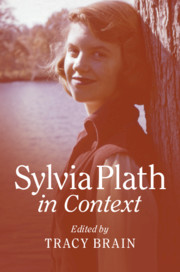Book contents
- Sylvia Plath in Context
- Sylvia Plath in Context
- Copyright page
- Contents
- Notes on Contributors
- Acknowledgements
- Chronology
- Abbreviations and Textual Note
- Key Archives
- Introduction
- Part I Literary Contexts
- Chapter 1 Plath and the American Poetry Scene
- Chapter 2 The Dominant Trends in British Poetry of the 1950s and Early 1960s
- Chapter 3 Plath and the Classics
- Chapter 4 Plath and the Radio Drama
- Chapter 5 ‘Sincerely Yours’: Plath and The New Yorker
- Part II Literary Technique and Influence
- Part III Cultural Contexts
- Part IV Sexual and Gender Contexts
- Part V Political and Religious Contexts
- Part VI Biographical Contexts
- Part VII Plath and Place
- Part VIII The Creative Afterlife
- Bibliography
- Index
Chapter 2 - The Dominant Trends in British Poetry of the 1950s and Early 1960s
from Part I - Literary Contexts
Published online by Cambridge University Press: 03 August 2019
- Sylvia Plath in Context
- Sylvia Plath in Context
- Copyright page
- Contents
- Notes on Contributors
- Acknowledgements
- Chronology
- Abbreviations and Textual Note
- Key Archives
- Introduction
- Part I Literary Contexts
- Chapter 1 Plath and the American Poetry Scene
- Chapter 2 The Dominant Trends in British Poetry of the 1950s and Early 1960s
- Chapter 3 Plath and the Classics
- Chapter 4 Plath and the Radio Drama
- Chapter 5 ‘Sincerely Yours’: Plath and The New Yorker
- Part II Literary Technique and Influence
- Part III Cultural Contexts
- Part IV Sexual and Gender Contexts
- Part V Political and Religious Contexts
- Part VI Biographical Contexts
- Part VII Plath and Place
- Part VIII The Creative Afterlife
- Bibliography
- Index
Summary
Eleanor Spencer explores the topography of poetry in Britain during the 1950s and early 1960s, suggesting that what we find is a series of what Al Alvarez saw as reactions to and rejections of that which came before. Plath emerges from a period which saw the Movement’s repudiation of the aesthetic and intellectual confusion of the New Romantics in favour of directness, communicability, and an incisive New Critical sensibility. Just six years later, however, Alvarez’s introduction to The New Poetry (1962) disavowed the ‘gentility’ of the Movement’s ‘academic-administrative verse’, calling instead for a poetry which ‘nakedly, and without evasion’ registered the ‘forces of disintegration’ in the post-WWII and Cold War era that threatened not only a familiar English way of life, but life itself.
- Type
- Chapter
- Information
- Sylvia Plath in Context , pp. 22 - 31Publisher: Cambridge University PressPrint publication year: 2019

